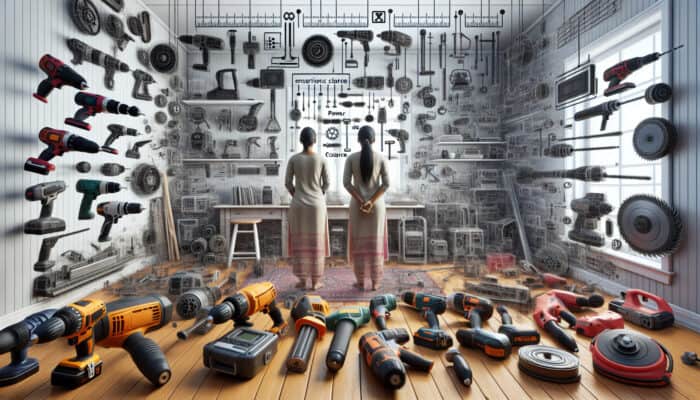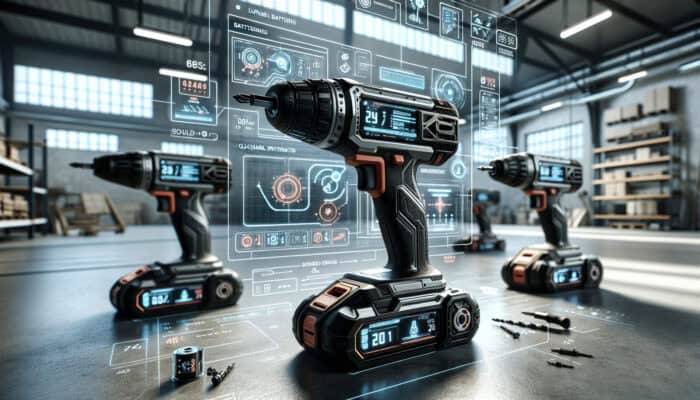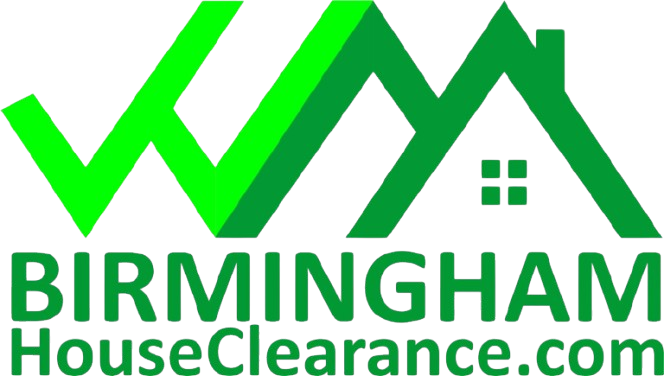Introduction to Electric Tools for House Clearance
What Are Electric Tools for House Clearance?

Electric Tools for Speedy House Clearance: Electric tools for house clearance are devices that utilise electrical power to facilitate the removal and disposal of various household items. These tools are specifically engineered to expedite the clearance process, thereby enhancing efficiency and reducing manual effort. Common electric tools employed in house clearance in the UK include the following:
- Power drills
- Electric screwdrivers
- Vacuum cleaners
- Dust extractors
- Electric saws
- Electric hoists
- Pallet jacks
- Portable lighting equipment
The use of such tools not only accelerates the process but also ensures a more organised and thorough clearance operation. For instance, power drills enable quick disassembly of furniture, while vacuum cleaners efficiently handle debris and dust, creating a safer working atmosphere.
Benefits of Using Electric Tools in House Clearance
Utilising electric tools for house clearance presents a multitude of advantages that significantly improve the process. One of the primary benefits is the substantial increase in speed. Electric tools can accomplish tasks that would typically take hours of manual labour in mere minutes. Alongside this, they reduce physical strain on users. This is particularly beneficial for those who may not have the strength to handle heavy lifting or extensive manual work.
Key benefits of using electric tools in house clearance include:
- Increased efficiency and speed in task completion
- Reduced physical exertion and risk of injury
- Enhanced precision in tasks such as cutting and drilling
- Improved cleanliness by effectively managing dust and debris
- Versatility for various tasks, from lifting to cleaning
- Cost-effectiveness through time savings
Adopting these tools not only streamlines the process but also enhances the overall quality of the clearance operation, enabling a more thorough and effective service delivery.
Safety Considerations When Using Electric Tools
Safety is of utmost importance when operating electric tools for house clearance. Improper handling of these devices can lead to serious accidents or injuries. Therefore, understanding and adhering to safety protocols is essential. It is crucial to maintain a safe working environment, which includes the proper use and maintenance of tools.
To ensure safety when using electric tools, consider the following tips:
- Always inspect tools for damage before use
- Use appropriate personal protective equipment (PPE)
- Keep the workspace tidy to prevent trips and falls
- Follow manufacturer guidelines for tool operation
- Disconnect tools when not in use to prevent accidental activation
- Keep bystanders at a safe distance during the operation
- Ensure proper training and understanding of each tool before use
Incorporating these safety measures not only protects the user but also contributes to a secure and efficient house clearance process.
Choosing the Right Electric Tools for House Clearance

Selecting the appropriate electric tools for house clearance is critical for achieving optimal results. The choice of tools largely depends on the specific tasks at hand and the scale of the clearance job. Key considerations include the power of the tools, their portability, and versatility for various applications.
When making your selection, assess the following factors:
- The size of the area requiring clearance
- The types of items to be cleared (e.g., furniture, appliances)
- The user’s familiarity and comfort level with different tools
- The power source availability in the work area
- Required maintenance and upkeep of the tools
A well-considered selection ensures that the tools not only meet the immediate needs of the clearance but also facilitate a smoother and more effective overall operation.
Expert Insights on Electric Tools for Speedy House Clearance
How Do Experts Recommend Choosing Electric Tools?
Experts advocate for a systematic approach when selecting electric tools for house clearance. It is essential to consider the unique characteristics of the job, including the size of the property, the nature of the items involved, and the user’s experience level with various tools.
For instance, when clearing a three-bedroom house filled with both furniture and appliances, experts might recommend a combination of power drills for disassembly, vacuum cleaners for debris removal, and heavy-duty lifting equipment, such as pallet jacks, for moving larger items. This multi-tool approach not only speeds up the process but also reduces the physical strain on the user.
Additionally, engaging with tool rental services can provide insights into the most suitable tools for specific projects. Real-world applications often demonstrate that individuals who take the time to consult with professionals or experienced operators can significantly enhance their efficiency and effectiveness during house clearance tasks.
What Are the Latest Innovations in Electric Clearance Tools?

The market for electric clearance tools is continually evolving, with innovations designed to enhance efficiency and improve the user experience. Recent advancements include enhanced battery technologies that provide longer operational times and quicker charging, allowing users to complete tasks without frequent breaks. Furthermore, smart features such as connectivity and automation are being integrated into tools, enabling users to monitor performance and receive notifications for maintenance.
To stay updated on the latest innovations, consider the following actionable steps:
- Follow industry publications and websites for news on new products
- Attend trade shows and exhibitions related to tools and machinery
- Network with industry professionals and join relevant online forums
- Subscribe to manufacturer newsletters for updates on new releases
Being proactive in seeking out these innovations can significantly enhance the effectiveness of house clearance operations.
How Can Professionals Benefit from Expert Advice?
Professionals in the house clearance industry can greatly benefit from expert advice on selecting and using electric tools. Understanding the nuances of various tools can lead to improved outcomes and increased customer satisfaction. Experts often provide insights into best practices, which can be invaluable for those looking to refine their operations.
For example, industry experts suggest that professionals should invest time in training sessions to learn about the latest tool functionalities and safety protocols. By adopting expert recommendations, individuals can streamline their workflows, select the most suitable tools for their tasks, and ultimately deliver superior service to clients. Additionally, engaging with mentors can provide real-world insights that are not readily available through traditional training.
How Can Electric Tools Improve Efficiency in House Clearance?
Electric tools have the potential to enhance efficiency in house clearance operations dramatically. By automating and simplifying various tasks, these tools allow workers to focus on strategic planning and execution rather than being bogged down by manual labour. Specific tools, such as electric saws for dismantling and vacuum cleaners for cleaning, can significantly reduce the time spent on each task.
Experts recommend employing a combination of different electric tools tailored to the specific needs of the clearance operation. For instance, using a dust extractor alongside a power drill can ensure that any debris created during disassembly is immediately managed, preventing a build-up that could hinder progress. Additionally, systematic organisation of the clearance process, facilitated by the right tools, can further optimise workflow and reduce overall project time.
What Safety Measures Should Be Considered When Using Electric Tools?
Maintaining a safe working environment is critical when using electric tools for house clearance. Adhering to established safety protocols not only protects the user but also ensures that the job can be completed efficiently without accidents. Experts recommend implementing a series of safety measures.
These safety protocols include:
- Conducting thorough inspections of tools before use
- Employing appropriate personal protective gear, such as gloves and goggles
- Keeping work areas well-lit and free of obstructions
- Ensuring that all operators are trained in the safe use of tools
- Establishing clear communication protocols among team members
- Providing first aid training to staff for emergencies
Incorporating these safety measures fosters a culture of safety and responsibility, which is particularly crucial in potentially hazardous environments, such as house clearance.
Types of Electric Tools for House Clearance
Power Drills and Screwdrivers
Power drills and electric screwdrivers are indispensable tools for house clearance, especially when it comes to dismantling furniture and fixtures. These tools vary in size and power levels, allowing users to select the most appropriate device for their specific needs. For example, a compact cordless drill may be ideal for quick, everyday tasks, while a more robust model might be necessary for heavy-duty disassembly.
In the UK, some of the best power drills and screwdrivers for house clearance include:
- DeWalt DCD771C2 Compact Drill/Driver Kit
- Bosch GSR12V-140B22 12V Max Drill/Driver
- Makita XFD131 18V LXT Lithium-Ion Brushless Cordless ½” Driver-Drill Kit
- Hitachi DS18DBFL2S Cordless Drill
Investing in high-quality tools not only improves efficiency but also ensures reliability during demanding clearance tasks. Each of these models offers features tailored to various clearance requirements, making them excellent choices for both professionals and DIY enthusiasts.
Vacuum Cleaners and Dust Extractors
Vacuum cleaners and dust extractors are essential electric tools for maintaining cleanliness and safety during house clearance. These devices efficiently manage dust, debris, and other particles that can accumulate during the clearance process, ensuring a safer working environment. They are especially important when dealing with fine dust created from dismantling items or cleaning up after removing large furniture.
When selecting vacuum cleaners and dust extractors in the UK, consider options that provide robust suction power and suitable filtration systems. Some recommended models include:
- Henry Hoover HVR160 – a reliable choice for general cleaning
- Makita VC4210LX1 Wet/Dry Vacuum – great for heavy-duty tasks
- Festool CT 26 E HEPA Dust Extractor – ideal for fine dust management
- Numatic George GVE370 – a versatile wet and dry vacuum
Utilising these tools not only enhances the efficiency of the clearance process but also contributes to a healthier working environment by effectively controlling dust and allergens.
Heavy-Duty Lifting Equipment
Heavy-duty lifting equipment, such as electric hoists and pallet jacks, significantly reduces the physical effort required to move cumbersome items during house clearance. These tools are particularly beneficial when dealing with large appliances, bulky furniture, or heavy boxes. By utilising electric lifting equipment, operators can minimise the risk of injury associated with manual lifting and streamline the overall process.
In the UK, several heavy-duty lifting tools are recommended for house clearance, including:
- Einhell TC-DH 12/1 12V Electric Hoist – compact yet powerful
- Sealey PCL700 Electric Pallet Truck – ideal for warehouse settings
- Silverline 285124 Heavy Duty Winch – great for lifting heavy items
- Wolfcraft 6942000 5T Electric Hoist – versatile for various applications
Investing in quality lifting equipment not only enhances efficiency but also significantly reduces the physical strain on workers, allowing for a more sustainable approach to house clearance tasks.
Electric Saws and Cutters
Electric saws and cutters are invaluable for dismantling wooden structures and cutting through various materials during house clearance. They range from handheld models to larger, stationary tools, each designed for a specific task. The versatility of electric saws enables users to efficiently manage various clearance jobs, from disassembling furniture to cutting materials for easier transportation.
In the UK, some recommended electric saws and cutters for house clearance include:
- DeWalt DWE575SB Circular Saw – lightweight and powerful for quick cuts
- Bosch GKS 190 Circular Saw – renowned for precision and reliability
- Makita JR3050T Reciprocating Saw – perfect for demolition tasks
- Black+Decker BDCJS20C Circular Jigsaw – ideal for intricate cuts
Using the right saw or cutter not only expedites the dismantling process but also ensures clean and precise cuts, reducing the need for additional finishing work after clearance.
Portable Lighting Equipment
Portable lighting equipment is essential for illuminating dark areas during house clearance, ensuring safety and efficiency. Many clearance jobs involve navigating cramped or poorly lit spaces, making proper lighting crucial for both visibility and safety. Electric work lights and headlamps are excellent options for providing adequate illumination.
In the UK, some recommended portable lighting options include:
- Ring RIL3000 Rechargeable Work Light – versatile and highly portable
- DEWALT DCL050 LED Work Light – durable and adjustable for various tasks
- Milwaukee M12 HALO 500 LED Work Light – known for its bright illumination
- Stanley FatMax SL10LEDS Worklight – a robust option for outdoor tasks
Incorporating portable lighting into the clearance process enhances visibility, which not only increases efficiency but also ensures the safety of all personnel involved.
What Are the Best Practices for Using Electric Tools in House Clearance?
How Can You Ensure Efficient Use of Electric Tools?
Efficient use of electric tools in house clearance is paramount for maximising productivity and achieving satisfactory results. Proper planning, tool selection, and technique play critical roles in ensuring that operations run smoothly. One of the first steps is to familiarise oneself with the tools and their specific functions. Understanding the capabilities and limitations of each tool allows users to deploy them effectively.
Additionally, implementing a systematic approach to the clearance process can significantly enhance efficiency. This might include organising items into categories, planning the sequence of tasks, and ensuring that all necessary tools are readily available. By following best practices, users can ensure that they complete tasks efficiently without unnecessary delays or complications.
Furthermore, regularly reviewing and optimising workflows based on past experiences can lead to improved efficiency over time. Lessons learned from previous clearance projects can inform future practices, enhancing overall effectiveness.
What Are the Maintenance Tips for Electric Clearance Tools?
Regular maintenance of electric clearance tools is essential for ensuring their longevity and optimum performance. Following the manufacturer’s guidelines for care and upkeep can prevent potential issues and extend the equipment’s lifespan. Key maintenance practices include regularly inspecting tools for any signs of wear or damage, cleaning them after use to remove dust and debris, and ensuring that all moving parts are lubricated as needed.
Users should also perform routine checks on power cords and batteries, as electrical issues can pose significant hazards. Ensuring that all tools are stored in a dry, secure environment also contributes to their longevity. By implementing a proactive maintenance routine, users can minimise downtime and enhance the effectiveness of their electric tools during house clearance tasks.
How Can You Train Staff to Use Electric Tools Safely?
Training staff on the safe use of electric tools is crucial for preventing accidents and ensuring efficient house clearance operations. A comprehensive training programme should encompass tool operation, safety protocols, and emergency procedures. It’s essential to provide hands-on training in a controlled environment, allowing staff to learn the functions of each tool before applying them to actual projects.
Incorporating safety drills into the training can prepare staff for potential emergencies, such as tool malfunctions or accidents. Ongoing training sessions can also be beneficial for keeping staff updated on new tools and safety measures. By fostering a culture of safety and competence, organisations can significantly reduce the risks associated with using electric tools in house clearance.
Research-Backed Benefits of Electric Tools for Speedy House Clearance
How Do Electric Tools Improve Clearance Efficiency?
Research indicates that electric tools can significantly enhance the efficiency of house clearance operations. Studies show that the use of electric tools can reduce the time required for tasks by over 30%, resulting in increased productivity and cost savings. This efficiency is largely attributed to the speed at which electric tools can perform tasks compared to manual methods.
By integrating electric tools into the clearance process, organisations can streamline workflows and allocate resources more effectively. For instance, using electric vacuum cleaners and hoists allows workers to complete multiple tasks concurrently, further reducing overall project time. The quantifiable improvements in efficiency underscore the value of investing in quality electric tools for house clearance.
What Are the Ergonomic Benefits of Using Electric Tools?
Electric tools offer significant ergonomic advantages that contribute to user comfort and safety during house clearance. Traditional manual tools often require considerable physical exertion, which can lead to fatigue and potential injury over time. In contrast, electric tools are designed to minimise physical strain, allowing users to complete tasks more comfortably and efficiently.
Research supports the notion that utilising electric tools can lead to a decrease in musculoskeletal disorders, which are common in physically demanding jobs. By reducing the need for manual lifting and repetitive motions, electric tools help to create a safer working environment. This ergonomic benefit not only enhances the user experience but also contributes to higher overall productivity during house clearance operations.
How Do Electric Tools Contribute to Environmental Sustainability?
Electric tools can contribute to environmental sustainability in several ways, particularly when powered by renewable energy sources. Their efficiency often results in reduced energy consumption compared to traditional tools, leading to a smaller carbon footprint. Moreover, electric tools generally produce fewer emissions, making them a more environmentally friendly option for house clearance.
Research indicates that adopting electric tools can facilitate a more sustainable approach to house clearance operations. By choosing tools designed for efficiency and longevity, organisations can decrease waste and promote environmentally responsible practices. This commitment to sustainability not only benefits the environment but also enhances the reputation of businesses within the house clearance industry.
Case Studies of Electric Tools in UK House Clearance
Successful House Clearance Projects Using Electric Tools
Several house clearance projects across the UK have effectively utilised electric tools to expedite processes and improve overall efficiency. For instance, a recent project in London involved the clearance of a three-storey house filled with furniture and appliances. By employing a range of electric tools, including power drills, vacuum cleaners, and heavy-duty lifting equipment, the team completed the job within a tight timeframe.
Case studies of similar projects reveal that electric tools not only expedited the process but also improved the quality of the clearance operation. The use of power drills enabled the quick disassembly of furniture, while vacuum cleaners effectively managed the dust and debris. These projects demonstrate the practical benefits of integrating electric tools into the house clearance process, resulting in enhanced efficiency and client satisfaction.
What Challenges Were Overcome with Electric Tools?
Electric tools have proven instrumental in overcoming various challenges encountered during house clearance operations. Common obstacles include tight deadlines, large volumes of items, and difficult-to-access spaces. In one particular case in Manchester, a team faced the daunting task of clearing an entire office space within a weekend.
By leveraging electric tools such as pallet jacks for transporting heavy items and vacuum cleaners for efficient cleaning, the team successfully met their deadline. The ability to utilise electric tools allowed for a quick response to unexpected challenges, demonstrating their value in minimising delays and ensuring a smooth clearance process.
How Have Electric Tools Impacted the UK House Clearance Industry?
The adoption of electric tools has significantly transformed the UK house clearance industry, leading to improved practices and increased efficiency. As more operators incorporate electric tools into their workflows, the industry has observed a notable reduction in the time required for clearance tasks. This shift has led to increased client satisfaction and a competitive advantage for businesses that can deliver fast and effective services.
Moreover, the integration of electric tools has also opened up new business opportunities within the sector. Organisations that embrace the latest technologies can differentiate themselves in a saturated market, attracting clients who value efficiency and professionalism. The overall impact of electric tools on the industry underscores their importance in driving innovation and growth.
Comparative Analysis of Electric vs. Manual Tools in House Clearance
Case studies comparing the efficiency and effectiveness of electric tools versus manual tools in house clearance projects highlight significant differences. For instance, a comparative analysis conducted on a house clearance in Birmingham demonstrated that the use of electric tools reduced task completion time by nearly 40% compared to manual methods.
The analysis revealed that while manual tools may still have their place in certain contexts, the advantages of electric tools, including speed, efficiency, and reduced physical strain, make them a superior choice for most clearance tasks. This data-driven approach underscores the importance of selecting electric tools as a primary resource for house clearance operations.
Future Trends and Innovations in Electric Tools for House Clearance
The future of electric tools in house clearance is poised for exciting advancements, with emerging trends and technological innovations set to enhance efficiency and user experience. Advancements in battery technology promise longer run times and faster charging, which will further improve workflow during clearance operations. Additionally, the incorporation of smart technologies, such as app connectivity and automated functions, is anticipated to revolutionise how users interact with their tools.
As the industry continues to evolve, staying informed about these trends will be crucial for those in the house clearance sector. Embracing new technologies not only optimises operations but also positions businesses to adapt to changing market demands and client expectations.
Future Trends in Electric Tools for House Clearance
What Are the Emerging Technologies in Electric Tools?
Emerging technologies in electric tools are set to transform the landscape of house clearance. Notable advancements include improvements in battery life, which enable tools to operate longer without needing a recharge. Furthermore, smart features, such as connectivity to mobile apps for monitoring and diagnostics, are gaining traction.
These technologies aim to enhance user convenience and operational efficiency. For example, tools that offer real-time feedback on performance can help users identify potential issues before they escalate, thereby minimising downtime during house clearance tasks. As these technologies continue to develop, they will undoubtedly play a pivotal role in shaping the future of electric tools in house clearance.
How Will Electric Tools Evolve in the Coming Years?
The evolution of electric tools in the coming years is likely to focus on efficiency, user-friendliness, and versatility. Manufacturers are increasingly investing in research and development to create tools that meet the diverse needs of the house clearance sector. This may include the development of lightweight, compact models that retain high power output while maintaining safety and performance.
Additionally, the trend towards sustainability is expected to influence the design of electric tools, with an emphasis on energy-efficient models and the use of recyclable materials. As the industry adapts to these changes, users can expect more innovative solutions that enhance the overall house clearance experience.
What Are the Potential Impacts of Electric Tools on House Clearance?
The widespread adoption of electric tools in house clearance could lead to significant changes across the industry. As efficiency improves, businesses will be better equipped to manage larger projects and meet tight deadlines, ultimately benefiting both clients and operators. This increased efficiency may also lead to reduced costs, allowing businesses to offer competitive pricing without compromising service quality.
Moreover, embracing electric tools could pave the way for new service offerings, such as environmentally friendly clearance options powered by renewable energy. As businesses increasingly adopt sustainable practices, the positive impact on the environment and community perception will further solidify the role of electric tools in the future of house clearance.
FAQs
What are electric tools for house clearance?
Electric tools for house clearance are devices that utilise electricity to assist in removing and disposing of household items, making the process faster and more efficient.
What are the benefits of using electric tools?
Electric tools increase efficiency, reduce physical strain, enhance precision, improve cleanliness, and provide cost savings through time efficiency.
What safety measures should be taken when using electric tools?
Always inspect tools for damage, use personal protective equipment, maintain a tidy workspace, and ensure proper training for all users to prevent accidents.
How do I choose the right electric tools for my house clearance?
Consider the size and nature of the clearance task, the user’s comfort level, and the tools’ power and portability when selecting electric tools.
How can electric tools improve efficiency in house clearance?
Electric tools automate and simplify tasks, allowing workers to focus on strategic aspects of clearance. They significantly speed up operations compared to manual methods.
What types of electric tools are commonly used for house clearance?
Common types include power drills, vacuum cleaners, electric lifting equipment, saws, and portable lighting, each serving a specific purpose in the clearance process.
How do I maintain my electric tools?
Regularly inspect for damage, clean after use, lubricate moving parts as needed, and store in a dry environment to ensure longevity and performance.
What are the ergonomic benefits of using electric tools?
Electric tools reduce physical strain, leading to less fatigue and fewer injuries, making the clearance process safer and more comfortable for users.
Can electric tools contribute to environmental sustainability?
Yes, electric tools are generally more efficient and can be powered by renewable sources, reducing the carbon footprint associated with house clearance.
What future trends should we expect in electric tools for house clearance?
Emerging trends include advancements in battery life, the integration of smart technology, and a focus on sustainable design, all aimed at enhancing user experience and efficiency.






